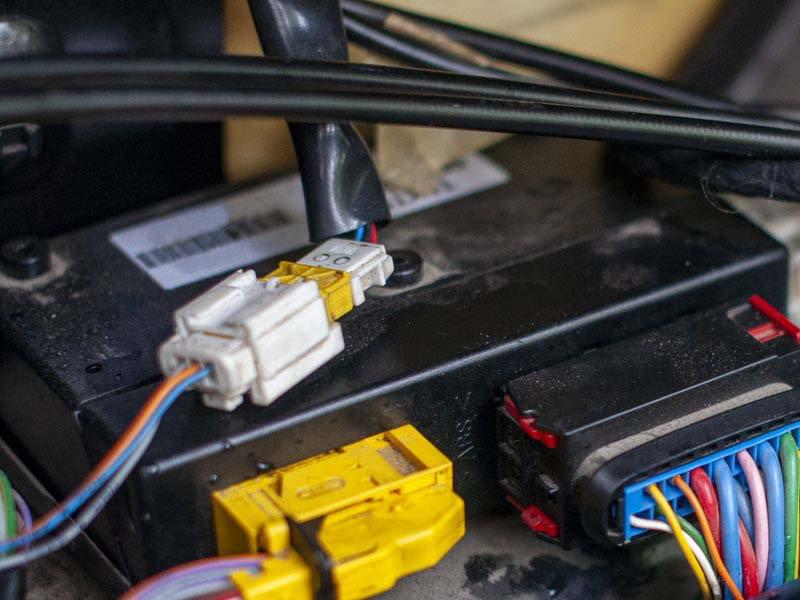Learn about the importance of
wiring harness testing, common test methods, and common end-use applications in a short Q&A from Jeff Andrasik, General Manager of
Product Testing.
Why Is Wiring Harness Testing Important?
The ongoing trend of a more connected and electric world has introduced new
electronic components to everything from vehicles to refrigerators. The wiring and connectors can often be placed in areas that see large temperature swings,
abrasion, exposure to fluids, and other elements that can cause damage, exposed wires, or faulty connections. Validation testing helps you understand the life cycle or durability of your product and how it will hold up in extreme conditions, as well as ensuring your product will function as designed. Electrical shorts can occur and cause the equipment to malfunction. Gradual wear in the harnesses or being pulled too taut can expose wires or disconnect the wiring completely. Depending on the application, various electrical or control systems are required to operate successfully and safely. The connections have become one of the most critical
components of the overall system.
What Are Some Of The Most Common Applications?
We have worked with clients from a wide range of industries which include
automotive, appliances, industrial machinery,
medical devices, and more. As each industry adds
electrical components to its equipment or devices, they will need to be validated.
Are You Seeing Any Trends?
With the
electrification of vehicles gaining pace over the past few years, we have certainly begun seeing a larger number of
components and connections within the vehicle platforms. The industry is pushing forward towards a 48V architecture to accommodate all of the electrical systems that are being added. As advanced driver-assistance systems continue to advance into semi-autonomous and fully autonomous systems, this trend will continue to grow. Home appliances and home automation have connected devices that never “spoke” before. This adds some new, sometimes unique challenges to device engineers that need to validate their devices for connectivity and proper function. Everything from tires to heavy equipment to industrial machinery is adding additional electronics and that means a lot more wiring and connectors.
What Are Some Of The Most Common Test Standards? What Types Of Variables Can You Test?
Some of the most common test standards include
ASTM,
SAE, ISO,
MIL, and other OEM standards. We can test materials as well as the full assembly or product. On the materials side, we provide a wide range of
material properties testing including: tension, abrasion, side-load, compression, fluid compatibility,
ozone, temperature exposures, electrical conductivity, and
corrosion testing. For the whole product, we provide environmental conditioning,
thermal and
mechanical shock,
vibration, and voltage drop testing.
How Have You Applied These Capabilities To Client Challenges?
The first example that comes to mind is circuit board testing. We tested a client's circuit board and wiring harness to see if a rapid change of temperature would impact the connections in the board or if there was cracking or loss of connection. We were able to measure voltage in the circuit boards based on the cycles and temperatures. A couple of other applications include:
- We have also taken clients' electrical products and added humidity to exposure to see if there was an impact on the connectors.
- We have applied abrasion testing to determine the number of cycles that various coatings can withstand when coming in contact with a metal substrate
- We have also worked with clients to test a full module operation under various temperature and vibration profiles. When adding voltage to the module, we can validate that it operates as designed under these conditions.
How Can We Help?
Smithers offers a wide range of product testing capabilities from
vibration,
ozone exposure,
humidity, and shock to make sure your products hold up against harsh conditions. Our global laboratories can execute testing programs to validate your products and ensure they function as designed and meet common industry, government, or OEM specifications.
To learn more about our
wiring harness testing or to discuss a testing project, contact us through the form above.
